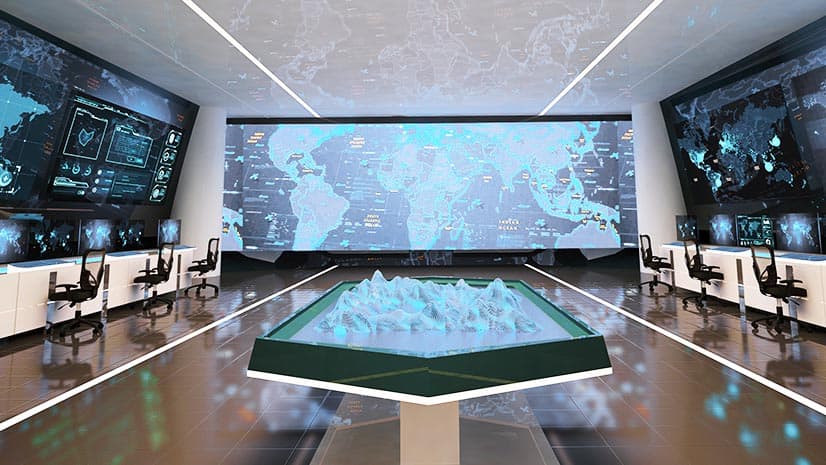Corporate Security Revealed: Securing Your Possessions and Online reputation
From Cybersecurity to Physical Measures: Enhancing Business Protection in a Transforming World
In today's swiftly progressing digital landscape, the relevance of corporate protection can not be overemphasized. As cyber hazards end up being widespread and increasingly advanced, companies should surpass conventional cybersecurity actions to safeguard their possessions and procedures - corporate security. This is where the assimilation of physical security procedures comes to be vital. By combining the staminas of both cybersecurity and physical protection, firms can create a detailed protection strategy that deals with the diverse series of hazards they encounter. In this discussion, we will check out the transforming hazard landscape, the need to integrate cybersecurity and physical safety, the execution of multi-factor verification actions, the importance of employee awareness and training, and the adaptation of safety actions for remote labor forces. By examining these key areas, we will gain beneficial understandings right into just how companies can strengthen their corporate security in an ever-changing world.
Understanding the Transforming Danger Landscape
The progressing nature of the modern-day globe demands a detailed understanding of the transforming danger landscape for efficient corporate protection. In today's interconnected and digital age, dangers to corporate security have actually become extra complicated and innovative. As technology advances and businesses become progressively reliant on electronic infrastructure, the capacity for cyberattacks, information breaches, and various other security breaches has actually considerably raised. It is important for companies to stay notified and adjust their safety and security determines to address these developing hazards.
One secret facet of recognizing the transforming hazard landscape is recognizing the different types of hazards that companies encounter. In addition, physical dangers such as theft, vandalism, and corporate reconnaissance stay prevalent concerns for organizations.
Surveillance and analyzing the hazard landscape is crucial in order to recognize prospective risks and vulnerabilities. This entails remaining updated on the most recent cybersecurity fads, assessing danger intelligence records, and performing routine risk analyses. By comprehending the changing hazard landscape, companies can proactively execute ideal security actions to minimize risks and secure their assets, reputation, and stakeholders.
Integrating Cybersecurity and Physical Protection
Integrating cybersecurity and physical safety and security is crucial for thorough business protection in today's digital and interconnected landscape. As companies increasingly count on technology and interconnected systems, the limits between physical and cyber dangers are becoming obscured. To effectively secure versus these dangers, a holistic technique that combines both cybersecurity and physical safety and security measures is crucial.
Cybersecurity concentrates on protecting digital assets, such as networks, systems, and data, from unauthorized access, disruption, and burglary. Physical protection, on the other hand, includes measures to protect physical properties, people, and facilities from vulnerabilities and risks. By incorporating these 2 domain names, organizations can deal with vulnerabilities and dangers from both physical and electronic angles, thereby enhancing their general safety stance.
The assimilation of these two disciplines permits a more extensive understanding of safety dangers and makes it possible for a unified response to incidents. As an example, physical access controls can be enhanced by integrating them with cybersecurity procedures, such as two-factor authentication or biometric identification. Cybersecurity steps can be complemented by physical safety and security steps, such as surveillance cameras, alarm systems, and safe gain access to points.

Applying Multi-Factor Authentication Actions
As organizations significantly prioritize extensive protection steps, one reliable approach is the application of multi-factor verification actions. Multi-factor authentication (MFA) is a safety and security technique that calls for customers to offer several kinds of recognition to access a system or application. This approach adds an additional layer of security by incorporating something the customer knows, such as a password, with something they have, like a fingerprint or a safety token.
By applying MFA, organizations can considerably boost their security stance - corporate security. Conventional password-based authentication has its constraints, as passwords can be conveniently endangered or forgotten. MFA mitigates these risks by adding an additional authentication factor, making it more challenging for unauthorized individuals to gain access to delicate details
There are numerous sorts of multi-factor authentication methods available, consisting of biometric verification, SMS-based confirmation codes, and hardware tokens. Organizations need to analyze their details needs and select the most appropriate MFA solution for their demands.
Nonetheless, the application of MFA ought to be thoroughly planned and executed. It is essential to strike an equilibrium in between safety and functionality to stop individual this stress and resistance. Organizations must likewise consider possible compatibility problems and provide ample training and support to ensure a smooth change.
Enhancing Worker Recognition and Training
To reinforce company security, organizations need to focus on enhancing worker understanding and training. Several security breaches occur due to human error or lack of understanding.
Efficient worker understanding and training programs need to cover a vast array of topics, including data protection, phishing attacks, social engineering, password hygiene, and physical safety and security steps. These programs ought to be tailored to the particular requirements and obligations of different worker functions within the organization. Regular training sessions, workshops, and simulations can assist employees develop the required abilities and expertise to react and recognize to security threats properly.
Moreover, companies should encourage a society of security awareness and provide ongoing updates and suggestions to keep employees educated about the current dangers and mitigation strategies. This can be done image source with inner communication networks, such as newsletters, intranet sites, and email projects. By fostering a security-conscious labor force, organizations can dramatically minimize the possibility of security occurrences and protect their useful assets from unauthorized accessibility or compromise.

Adapting Protection Measures for Remote Workforce
Adapting business safety actions to suit a remote labor force is vital in making certain the protection of sensitive info and assets (corporate security). With the enhancing pattern of remote work, organizations should execute proper safety procedures to alleviate the dangers connected with this new way of functioning
One vital aspect of adapting safety and security steps for remote work is developing safe and secure interaction networks. Encrypted messaging platforms and virtual private networks (VPNs) can help shield delicate info and avoid unauthorized access. In addition, companies must impose making use of solid passwords and multi-factor verification to improve the safety and security of remote access.
An additional crucial consideration is the implementation of safe and secure remote gain access to services. This involves giving workers with protected access to corporate sources and data via online desktop framework (VDI), remote desktop protocols (RDP), or cloud-based options. These innovations ensure that delicate information continues to be secured while making it possible for workers to perform their functions effectively.

Lastly, extensive safety awareness training is critical for remote employees. Training sessions must cover best methods for safely accessing and taking care of delicate details, recognizing and reporting phishing efforts, and keeping the total cybersecurity health.
Verdict
Finally, as the threat landscape continues to evolve, it is essential for organizations to strengthen their safety and security determines both in the cyber and physical domains. Integrating cybersecurity and physical security, implementing multi-factor verification actions, and boosting staff member understanding and training are necessary steps towards achieving durable business safety and security. Additionally, adapting protection procedures to fit remote workforces is vital in today's altering world. By applying these procedures, organizations can mitigate threats and secure their useful assets from possible dangers.
In this conversation, we will discover the altering hazard landscape, the requirement to incorporate cybersecurity and physical safety and security, the execution of multi-factor authentication actions, the significance of staff member awareness and training, and the adaptation of safety measures for remote workforces. Cybersecurity measures can be complemented by physical protection steps, such as security cameras, alarms, and safe and secure access points.
As companies increasingly prioritize detailed protection measures, one efficient technique is the execution of multi-factor authentication steps.In final thought, as the hazard landscape continues to evolve, it is vital for companies to strengthen their safety and security determines both in the cyber and physical domain names. Incorporating cybersecurity and physical protection, implementing multi-factor authentication procedures, and boosting staff member recognition and training are essential steps towards achieving robust corporate security.